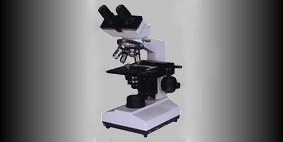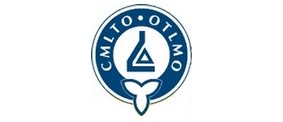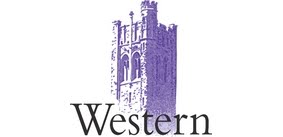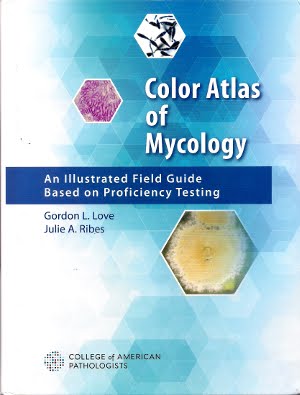Saturday, 13 April 2013
Trichothecium roseum
Trichothecium roseum (Fungus)
Ecology: Trichothecium species are cosmopolitan
fungi (found just about everywhere) and is a common saprobe (growing on
decaying vegetation). In particular, it
has been isolated from withering fleshy fruits such as peaches, plums and
nectarines. Trichothecium is responsible for ‘pink rot’ of apples.
Macroscopic
Morphology: Trichothecium is a rapidly growing fungus which is fully mature in
3 to 4 days. Colonies are described as
being flat, suede-like to powdery, which start off white but quickly develop a
light pink to peach colour which may reach a darker salmon colour on continued
incubation. The reverse is a rather non-descript
light or pale colour. Pictured below are
colonies grown at 30oC on Sabouraud Dextrose Media (SAB or SDA). Trichothecium
fails to grow at 37oC making it an unlikely candidate for human
pathogenicity.
Trichothecium roseum on SAB agar, 72 hrs, 30oC (Nikon)
It was rather difficult to capture (and correct for) the exact colour hue under harsh labor fluorescent laboratory lighting within the biological laminar flow hood. The colour descriptions range from a light pink to peachy to salmon or even orange on extended incubation.
Trichothecium roseum on SAB after 14 days incubation at 30oC (Nikon)
Microscopic
Morphology: Hyphae produced by Trichothecium are septate and hyaline
(clear, not pigmented). The long, thin and
erect conidiophores are indistinguishable from the vegetative hyphae and may
exhibit septation near their base of attachment. Trichothecium
roseum produces rather thin walled, two-celled conidia (16-20µm X 8-12µm)
which are pyriform or clavate in shape.
Basipetal growth has the newest cell developing below the previous one (The youngest cells are at the base while
the oldest are at the apex.) This
growth produces a sympoidal pattern seen as zigzag or alternating conidia extending
from the conidiophore on opposite sides.
Free conidia have a truncated basal scar usually obliquely offset,
indicating their former point of attachment.
Note: All photos which appear below were taken with the Leica DMD-108 digital microscope.
Trichothecium roseum growing from the surface edge of agar (bottom of photo). Fine hyphae and conidiophores bearing conidia are seen (7 days 250X LPCB)
Trichothecium roseum -conidiophores are seen extending along the lengths of hyphae. Conidia are seen clumped at the apex of the hyphae. Branching of conidiophores is rare if it occurs at all.
(250x. LPCB)
Trichothecium roseum - conidiophores with early production of two-celled conidia are seen extending from a hyphal element just out of focus below. A number of two-celled conidia are seen free of the conidiophore. A truncated basal scare can be seen which may may be somewhat offset from center (arrow), due to the sympodial pattern of growth.
(400X, LPCB)
Trichothecium roseum - again, conidiophores are seen extending from the hyphae (slightly out of focus at top). Cells appear 'clustered' around the apex of the conidiophore as the growth extends. Note 100µm bar at top right of this and previous photo.
(LPCB, 400X)
Trichothecium roseum - conidiophores extending from hyphae with pyrimidal or clavate shaped (pear shaped) conidia extending to the apex. Again, 100µm bar appears on this and various other photos for scale. (400X, LPCB)
Trichothecium roseum - somewhat thick walled, two-celled clavate conidia are seen at the apex of the conidiophore extending upwards into the focal plane of the camera. The conidium at the top of the group appears contorted (twisted) at the bottom where it is attached to the conidiophore. When released, a truncated basal scar will be present at this attachment point and it will be somewhat offset from the centerline of the conidium. (1000X, LPCB)
Trichothecium roseum - once again the clavate shaped conidia are seen attached along the conidiophore. Here you can see the sympodial growth pattern which produces conidia in an alternating or zigzag pattern along the conidiophore. The youngest cells are at the bottom with the most mature at the apex (top) of the cluster. (1000X, LPCB)
Trichothecium roseum - free conidia showing the pyramidal, clavate (club shaped) or perhaps pear shape characteristic of this fungus. The cell wall is rather thin to moderately thickened and the central division is visible in most cells above. Again, the basal scar appears at the previous point of attachment and may be somewhat offset from the center line of the conidium.
(1000X, LPCB)
Trichothecium roseum - clavate two-celled conidia seen attached to conidiophore
(1000+10X, LPCB)
Trichothecium roseum - one more photo just for the heck of it. Septate hyphae can be seen. Sympodial attachment of cells can be seen with the two cells near the center of the photo.
(400X, 14 days, LPCB)
Trichothecium roseum -Computer wallpaper (1024X768)
Pathogenicity: Trichothecium species are generally clinical
laboratory contaminants. No human or
animal infections have been reported.
Differentiation: Trichothecium
roseum may initially be confused with Microsporum
nanum as this fungus produces a similar light pink to buff coloration. M.nanum,
however, exhibits a reddish-brown pigment on reverse in contrast to the pale
reverse of T.roseum. The conidia produced by M.nanum are also two celled however they are sessile (attached directly
to undifferentiated conidiophores) or on short stalks. Finally, Microsporum nanum has the ability to
perforate hair cells and is not inhibited by the cycloheximide in Mycosel agar.
* * *
Subscribe to:
Post Comments (Atom)
.jpg)
.jpg)
+14d.jpg)










.jpg)

.jpg)
























No comments:
Post a Comment